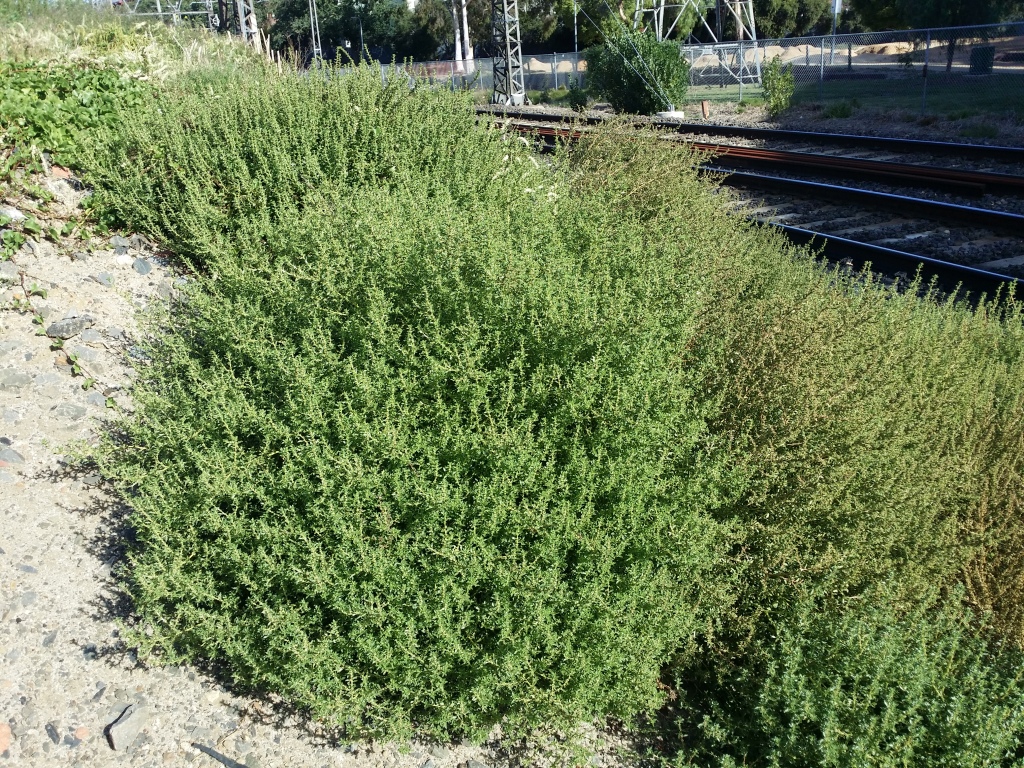Amaranthus albus
L. Stiff TumbleweedVariable, decumbent to erect annual to c. 80 cm high (commonly detaching near ground level at maturity and dispersing as a tumbleweed). Stems whitish (often turning red at maturity), glabrous or glabrescent. Leaves shortly petiolate to subsessile, ovate to obovate, lamina 5–20(–50) mm long, 2–10(–20) mm wide; margin often undulate; apex usually shortly mucronate. Flowers in axillary cymose clusters c. 5 mm long, unisexual; bracts c. 3 mm long; bracteoles c. 2 mm long, spinescent; tepals 3, oblong to spathulate, 1–2 mm long, acute; stamens 3. Utricle circumsciss (rarely indehiscent), slightly exceeding perianth, abruptly tapered toward apex, finely wrinkled or blistered; seed biconvex, brown, shiny, c. 1 mm diam. Flowers mainly Jan.–Apr.
MuM, Wim, VVP, VRiv, MuF, GipP, OtP, Gold, CVU, NIS, EGL, EGU, HSF, HNF, MonT. Also naturalised WA, SA, NSW. Native to southern North America. A common weed of streambanks, roadsides, railway-lines (common in Melbourne), and waste ground, chiefly in warmer parts of the State, but sometimes coastal or fringing salt lakes in the south (e.g. French Is., Port Phillip, Lake Corangamite).
Very rarely, the ripe utricles are indehiscent (noted in specimens from Barmah Forest and Springhurst), but plants exhibiting this abnormal feature are otherwise quite typical.
Walsh, N.G. (1996). Amaranthaceae. In: Walsh, N.G.; Entwisle, T.J., Flora of Victoria Vol. 3, Dicotyledons Winteraceae to Myrtaceae, pp. 199–215. Inkata Press, Melbourne.
 Spinning
Spinning



